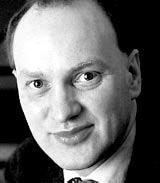Build up a head of steam
Hugh Pearman looks at Brunel the Younger who laid the tracks for today’s celebrity designers

Now look, I’m no anorak. Old railways are not my thing. True, I have a strong, even intense, interest in the relics of what used to be called the Industrial Revolution. However, Georgian engineering is usually more to my taste than Victorian. If I was forced to choose between the great engineers it would have to be James Brindley or Thomas Telford rather than the Stephensons or the Brunels. When it comes to early transport technology, I instinctively favour the canal over the railway network. For its time, it was prodigious.
But you can’t get away from Isambard Kingdom Brunel. He was more than an engineer, he was an industrial designer. I have friends down in Wiltshire, and to walk from their house out into the countryside, you have to cross the tracks of the Great Western Railway. On a fast curve. You have to stop, look and listen for the approach of trains at full throttle. While I was doing that one day, I noticed the posts of the stile leading to the crossing. These posts were made out of leftover bits of railway line. One looked odd: it was not the usual solid slender T-beam. It was hollow. It had a curious top-hat section where the metal had been sliced across. And this is where I had, yes, a bit of an anorak moment.
I had just finished reading LTC Rolt’s classic 1950s biography of Brunel. Thus briefed, I knew what I was staring at: an original bit of Brunel’s lightweight wrought-iron wide-gauge track. It had caused him great problems: the rails wore out very quickly. Even as the line was being built, he had to rip up the early sections and replace them with tougher metals. Presumably, the rejected stuff was sawn up and re-used for fencing along the line. So this post was a 160-year-old piece of industrial archaeology. Designed by Brunel himself, badly made, and a bit of a disaster. Oh, and he was rubbish at specifying railway locomotives, too. He appeared to have only the vaguest idea how they worked. So the early ones were awful.
That’s the thing about that generation of engineers: they designed virtually everything, because there was far less specialisation. Brunel was unbelievably clever, but he lacked experience, and by goofing with both track and engines, he got an awful lot wrong. It’s not even as if he invented the railway – the Stephensons did that. But it’s the incidentals I like about the lives of such people. Such as the mini-mobile-home Brunel designed for himself, a four-wheeled carriage with a folding roof of the type known as a britzka, long enough to lie down in, and fitted out inside to accommodate all his engineering instruments and a huge magazine of 50 cigars.
OK, so I got a little bit excited about my discovery of the Brunel post. We all want a bit of him, and this was my bit. So it must have been recently when those chaps from English Heritage went out to inspect a demolition site at a bridge over a canal near Paddington. There, encased within a modern bridge structure, was Brunel’s original cast-iron one, in perfect condition. All the drawings he made of it survive, as do his letters to the canal company. It’s authenticated. They will carefully dismantle it, and put it up again as a pedestrian bridge nearby. It’s like going into a barn somewhere in Wiltshire and finding Brunel’s britzka standing in a corner, still stocked with mouldering cigars and mottled engineering drawings, mice nesting in a stovepipe hat.
That sort of thing sets you thinking. Brunel assiduously courted the cult of celebrity, and it worked. An earlier engineer such as Telford arguably achieved as much or more, and his surviving work is older and rarer, but who cares about that? There is an amazingly advanced early prefabricated iron aqueduct by Telford just sitting in the middle of a field in Shropshire, visited by almost no-one. Had it been Brunel’s, it would be the centrepiece of a theme park by now. Why is this?
It is because photography had not been invented in time for Telford. There is no moody image of a cigar-chomping Telford in mutton-chop whiskers and tall hat, standing in macho fashion in front of piles of chains at the Great Eastern shipyard. It was all going wrong for Brunel at the time that photo was taken, but you wouldn’t know it from his stance.
So that was our Isambard: not just an engineer, but the first superstar designer. It’s a curious thing, but when I see that photograph, I think of another celebrity designer fond of trying out daft ideas and posing for the camera: Philippe Starck. Brunel, you have much to answer for.
Please e-mail comments for publication in the Letters section to lyndark@centaur.co.uk
-
Post a comment



